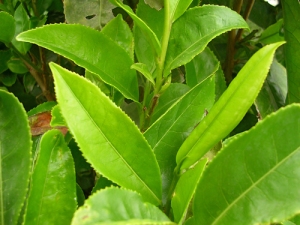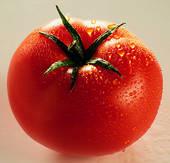
Omega 3 fatty acids
It was found that the secret of protection in the Eskimos against Heart disease, Diabetes and skin diseases lies in regular intake of marine Omega-3 fatty acids.
Omega 3 — A Boon to Cardiac Patients !
Ornega-3 are polyunsaturated fatty acids found all most exclusively in fish. They have become a hot topic- because they can reduce chance of heart attack in patients with heart disease.
It is reported that Omega-3 are vital from childhood to adults.
The protective effects of Ornega-3 were discovered by observing Eskimos who eat large amount of these polyunsaturated fatty acids in their foods. The Eskimos almost never developed heart disease. Thus researchers looked for the link and found Omega-3 in oils. Omega-3 makes your cardiac patients risk- free due to presence of EPA & DHA.
EPA & DHA
The most common long chain Ornega-3 PUFA fatty acids are known as EPA (eicosapentaenoic acid) and DHA (docosahexaenoic acid)
Eicosapentaenoic Acid (EPA) is a member of the Omega-3 fatty acid family. EPA is required for the production of a special group of substances in the body called prostaglandins, which control blood clotting and other arterial functions.
EPA also provides a natural approach in lower blood cholesterol & triglycerides.
Thus, EPA is a direct source of an important substance called prostaglandin E3. Prostaglandin E is directly responsible for making blood platelets less sticky thus, leading to an easier flow of blood throughout our bodies. This means that EPA is intimately involved in bodily process that inhibits blood clots, particularly in the small capillaries of the heart. Due to the body’s inability to synthesize EPA & DHA, it has to depend on external source. In early infancy and old age the body is not capable of producing adequate amounts of EPA and is true of people suffering from cardiovascular disorders, diabetes. As this fatty acids offer nutritional as well as medical benefits, it is recommended that the intake should be on regular basis.
Effects of EPA
EPA is known to:
Lower lipids – decrease TG, increase HDL
Have an anti-thrombotic – decrease blood clotting effect.
Have an anti-arrhythmic effect.
Have an anti-inflammatory – via eicosanoids, weakens the effect of pro-inflammatory hormones
DHA (Docosabexaenoic Acid)
Of almost equal importance, but not as widely researched is Docosahexaenoic Acid (DHA). It comprises of a significant amount of the tissue, which makes up our brains as well as large part of retina of eye.
DHA plays a vital role during pregnancy and infant development, and also during old age.
Effects of DHA
DHA is known to:
Lower lipids – decreases TG, increases HDL
Have an anti-inflammatory
Facilitate the normal growth – incorporated into membrane, development and function of the lipids of brain, nerves and eyes.
Improve the clinical symptoms – corrects abnormalities of depression & schizophrenia.
Omega 3 — Boosts Brain Power ?
In a study of more than 1 000 people (average age 75); those with high blood levels of an Omega-3 called DHA were more than 40% less likely to develop dementia (including Alzheimer’s) over the next nine years than people with low DHA levels. One theory why: We know the brain latches onto DHA – its favorite fat – to help build membranes around nerve cells; possibly the more DHA, the easier it is to zap messages from cell to cell.
Omega 3 — For Pregnant & nursing mothers
DHA, an Omega-3 fatty acid is the predominant structural fatty acid in the brain & retina. It comprises approx. 40% of the polyunsaturated fatty acids in the brain & 60% in retina. The developing fetus & infant have particularly high requirement for DHA. They obtain at least half this requirement for brain development in the womb, with the rest coming from mother’s milk during nursing. If infants are not breast fed, they are usually fed infant formula. Unfortunately most formulas do not contain DHA. Instead they contain linolenic acid, the precursor of DHA. However the infants have limited ability to convert linolenic acid into DHA. Thus it may be said that DHA in the diet is essential for the developing nervous system of human infants.
Since, the human brain development takes place at the greatest rate during the last trimester of pregnancy DHA is transferred from mother to the fetus at a high rate during this period.
Maternal reserves of DHA are deficient in cases of closely spaces pregnancies or in case of twin or triplets in a pregnancy.
The cause of low DHA is because our bodies can convert other foods into DHA, but the process is inefficient. Thus pregnant or nursing mothers may not have adequate amount of DHA stored in their bodies to pass on adequate amounts to the developing fetus or breast feeding infants.
Research has suggested that increased long chain Omega-3 fatty acids intake during the pregnancy prolongs gestation, increases birth weight and reduces incidence of premature birth.
Omega-3 fatty acids, whatever their source, seem to offer various benefits, beyond reducing heart disease risk.
Like :
- Weight loss. Australian researchers found in 1999 that eating tuna, salmon or other fish rich in omega-3 fatty acids once a day as part of a weight loss plan helped people lose weight.
- Mental illness and depression. Patients with bipolar disorder – known also as manic-depression – who took fish oil capsules regularly displayed fewer symptoms. It is believed that omega-3 fatty acids help stabilize mood.
- Crohn’s disease. Several studies show that taking fish oil capsules appears to reduce symptoms and aid in the remission of this often painful inflammation of the bowel that can also cause diarrhea and weight loss. Fish oil appears to also prevent relapse of the disease.
- Rheumatoid arthritis. In the past 10 years, several studies have suggested that fish oil can help reduce or control inflammation of the joints. Studies have suggested that omega-3 fatty acids have helped patients reduce their need for anti-inflammatory drugs.
- Cancer. Several studies have found that people who consume a lot of omega-3 fatty acids seem to have a decreased risk of some types of common cancers – notably breast, colon and possibly prostate.
- Blood pressure. A study showed that combining a daily meal that includes fish with a weight reduction plan lowered the blood pressure and heart rate for overweight people suffering from high blood pressure.
Source of DHA & EPA
Source of DHA & EPA – Cold-water fish, such as mackerel, salmon, herring, sardines, black cod, anchovies, and albacore tuna, are rich sources of DHA and EPA. Similarly, cod liver oil contains large amounts of DHA and EPA.
Who is likely to be deficient? Premature infants who are not breast-fed are often DHA deficient.
A link has appeared between DHA deficiency and Alzheimer’s disease; however, no evidence at this time indicates that supplementation with DHA will help Alzheimer’s patients. Similarly, preliminary evidence shows that children with Attention Deficit Disorder (ADD) have low DHA levels; however, no evidence demonstrates that DHA supplementation improves ADD










 This could be useful in preventing tumors from forming new blood vessels, which they need to survive. In a study on mice, the researchers also found animals fed on green tea showed a 55-percent to 70-percent reduction in blood vessel development in the cornea of the eye, a finding that could prove helpful to diabetics suffering from retinopathy.
This could be useful in preventing tumors from forming new blood vessels, which they need to survive. In a study on mice, the researchers also found animals fed on green tea showed a 55-percent to 70-percent reduction in blood vessel development in the cornea of the eye, a finding that could prove helpful to diabetics suffering from retinopathy.

 different phytochemicals. Some, such as Digitalis and Quinine have been used for medicinal purposes for centuries.
different phytochemicals. Some, such as Digitalis and Quinine have been used for medicinal purposes for centuries.








